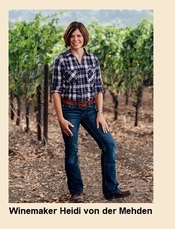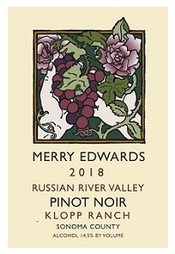|
|
 |
|
January 27, 2021
If this keeps up, the French will need to stop complaining about bureaucratic delays. In just two years, the Institut National de l’Origine et de la Qualité (INAO), the regulatory body for French wines, has approved six new grape varieties that can be planted in Bordeaux and included in the blend of the wines. Two years! It took the same regulatory body over a decade to codify Premier Cru vineyards in Pouilly-Fuissé. Mon Dieu, what is going on?
What’s going on is climate change. These new varieties, four reds (Arinarnoa, Castets, Marselan and Touriga Nacional) and two whites (Alvarinho and Liliorila), can be planted in limited amounts in the less prestigious appellations, such as Bordeaux, Bordeaux Superior, and Entre Deux Mers, starting this year. An estate can allocate no more than five percent of their vineyards to the new varieties and they cannot comprise more than 10 percent in of the final blend of the wine. Importantly, as Jane Anson, a world authority on Bordeaux, points out, the new varieties are not allowed in the most prestigious appellations, such as Margaux, St. Julien, Pauillac, and St. Éstephe.
This announcement, first reported in Drinks Business, had me running to Wine Grapes by Jancis Robinson, Julia Harding and José Vouillamoz, the leading reference on that subject since I had never heard of Arinarnoa, Castets, and Liliorila.
According to Wine Grapes, Arinarnoa, a cross of Cabernet Sauvignon and Tannat, gets its name from the Basque dialect words arin, which means light and arno, which means wine. How a cross of Cabernet Sauvignon and Tannat could possibly produce a light wine is beyond me.
Castets is a “very minor western Pyreneen variety clinging on in France,” according to Wine Grapes. It is native to the south of France and is a component of Château Simone’s “Palette” Rouge.
Wine Grapes tells us that France recorded fewer than 10 acres of Liliorila, a cross of Baroque (another grape I’ve never heard of) and Chardonnay, in 2008 and has the potential to produce powerful aromatic wines.
It’s not surprising that two traditional Portuguese varieties, Touriga Nacional and Alvarinho, would be included since they do well in hot climates. Marselan, a cross between Cabernet Sauvignon and Grenache, a kind of Bordeaux-Rhône collaboration, already has a following in southwestern France and is becoming popular in China.
These grapes have variable vegetative cycles—that is they bud and ripen at different times—and have resistance to a variety of maladies. The hope is that they will mitigate the effects of climate change in Bordeaux. As the French would say, “On verra” (we’ll see).
One thing is clear—the INAO can move when it wants to.
Read more: Michael Apstein
Connect with him on Twitter: @MichaelApstein
Posted by Michael Apstein at 1:20 PM
|
|
January 6, 2021
 Changes abound at Merry Edwards Winery, one of California’s leading Pinot Noir producers. In 2019, Louis Roederer, the Champagne house, purchased the winery, adding it to their already impressive group of California properties. With the 2018 vintage, Heidi von der Mehden took over from Merry Edwards herself as winemaker after working with her since 2015. What hasn’t changed is the stunning quality of the wines. Changes abound at Merry Edwards Winery, one of California’s leading Pinot Noir producers. In 2019, Louis Roederer, the Champagne house, purchased the winery, adding it to their already impressive group of California properties. With the 2018 vintage, Heidi von der Mehden took over from Merry Edwards herself as winemaker after working with her since 2015. What hasn’t changed is the stunning quality of the wines.
Though responsible for the entire lineup of 2018s, Von der Mehden’s talents were clearly apparent earlier with the Bucher Pinot Noir. She has been responsible for that wine since it was first added to the Merry Edward’s Pinot Noir portfolio with the 2016 vintage. Though I didn’t taste that initial bottling, I reviewed the 2017 Bucher (93 pts) last year: “The 2017, a large-framed Pinot Noir, combines ripe black fruit notes with fabulous acidity that keeps it fresh and lively. Not overdone, it carries the 14.5 percent stated-alcohol seamlessly. Underneath the fruit lies an intriguing and balancing mineral-like tarriness. A delightful hint of bitterness in the finish reinforces that this wine, as juicy as it is, is not solely about fruit. Refined tannins made it hard to resist now.”
The 2018 Pinot Noirs are equally impressive.
The 2018 Sonoma Coast bottling displays bright and lively red fruit character with savory nuances and a welcome hint of bitterness in the finish. It’s a “high-toned,” leaner style of Pinot Noir that superbly reflects the cool coastal influences (91; $54). It makes a wonderful contrast with the riper and deeper 2018 Russian River Valley bottling, whose fruit comes from a variety of vineyards in that warmer AVA. A weightier wine with black, rather than red, fruit, the Russian River Valley Pinot Noir is juicy and well within bounds despite a 14.5 percent-stated alcohol. It also has that alluring bitterness in the finish (92; $60).
The three single vineyard bottlings continue to show the importance of site: Same vintage, same grape, same winemaker, but three different wines, all of which are superb.
 The floral 2018 Klopp Ranch Pinot Noir displays a gorgeous layered complexity, with minerality and dark fruitiness intertwined. It conveys far more mineral-like nuances than the Russian River Valley, reflecting the focus of a single vineyard. Heft and intensity without being over the top, coupled with suave tannins and an engaging bitterness in the finish, make it hard to resist now (94; $73). The floral 2018 Klopp Ranch Pinot Noir displays a gorgeous layered complexity, with minerality and dark fruitiness intertwined. It conveys far more mineral-like nuances than the Russian River Valley, reflecting the focus of a single vineyard. Heft and intensity without being over the top, coupled with suave tannins and an engaging bitterness in the finish, make it hard to resist now (94; $73).
The dark and brooding 2018 Olivet Lane is amazingly refined, especially considering its concentration. Less floral and fragrant than the Klopp Ranch, it expands and explodes as it sits in the glass. Initially, black fruit flavors predominate, but with air and time, savory notes appear and take over. Merry Edwards’ signature suaveness amplifies its appeal. Though plush and powerful, it is not heavy nor overdone (96; $72).
Unlike its two stablemates, the youthful 2018 Meredith Estate displays toasty oak flavors and little else initially. But, befitting a youthful, tightly wound wine, its considerable charms emerge with time in a glass. Denser and more concentrated than the other two, it remains balanced and within bounds. Under the new team, Merry Edwards continues to avoid the overdone, “Pinot Syrah” style. Similar to their other 2018s, its grandeur is apparent in an intriguing dark cherry-like hint of bitterness in the exceptionally long finish. The 2018 Meredith Estate needs a few years to come together, as I’m sure it will, judging from previous vintages (96; $80).
Thankfully, it appears that there’s no change in style despite new ownership and a new winemaker at Merry Edwards. Their Pinot Noirs remain bold, yet balanced, expressions of that grape, not Burgundy wannabes.
Posted by Michael Apstein at 6:46 PM
|
|
 |
|